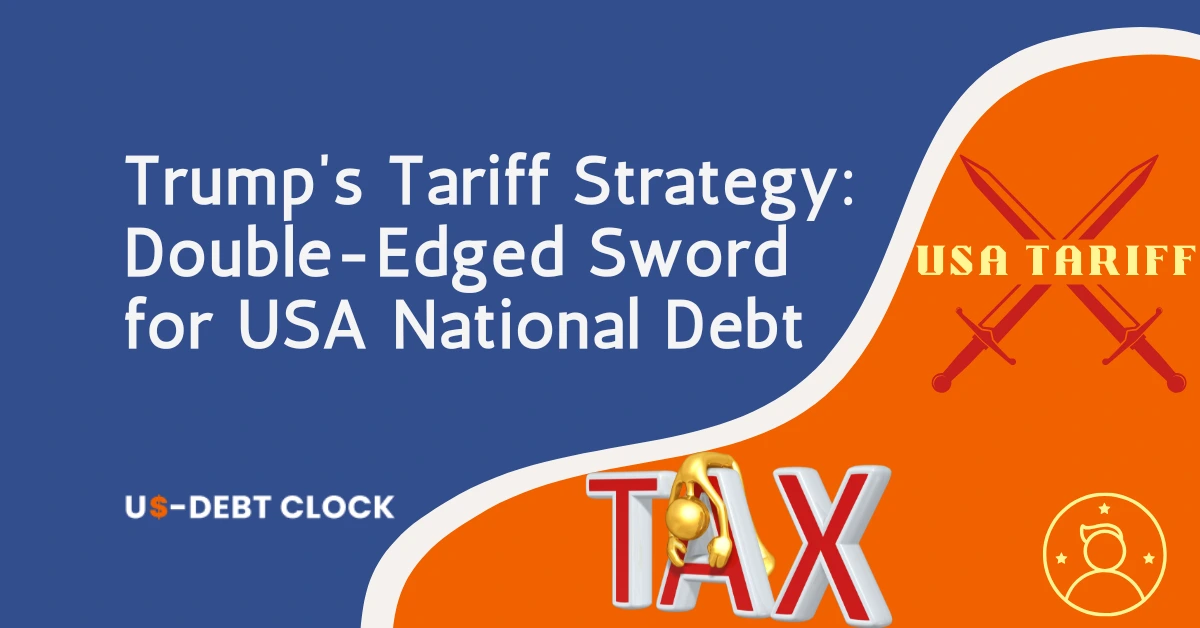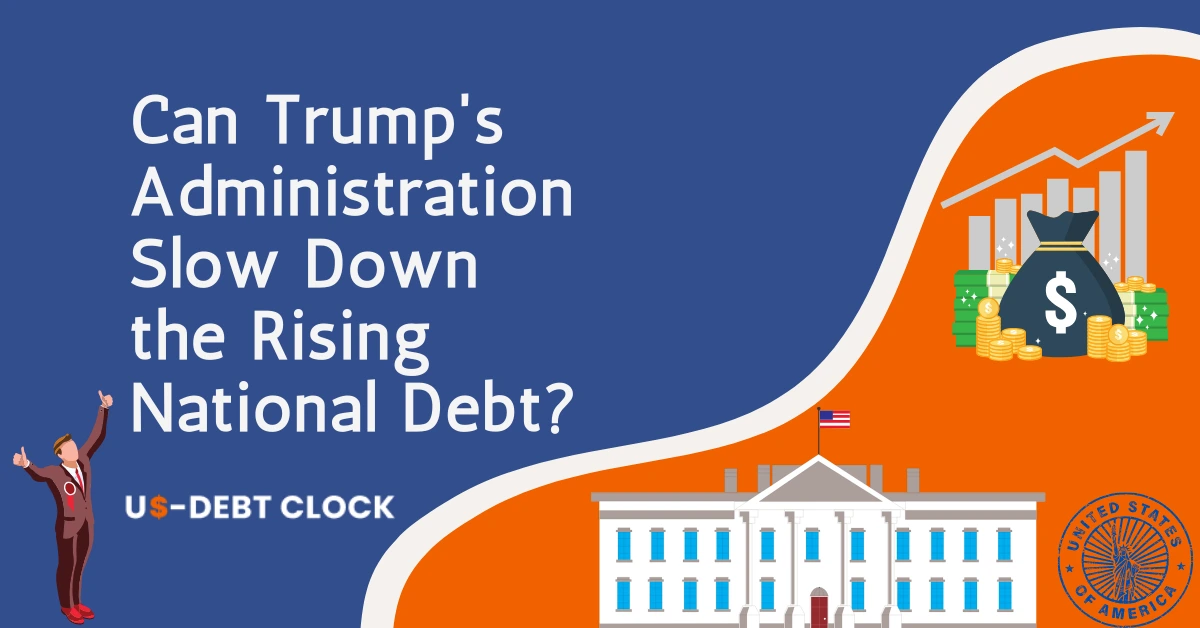The national debt of the United States in 2025 exceeds the historical high of $34.5 trillion and, hence, has placed policymakers under pressure to find innovative new sources of revenue that would not require the imposition of new taxes or cutting essential public service.
According to President Donald Trump, the Gold Card Program introduced in February 2025, allows foreign nationals to pay the government $5 million to gain U.S. residency and thus becomes a residency for investment program.
Unlike the EB-5 visa program requiring investment and creating jobs, Trumpâs $5 Million gold card is about the least complex option available for residence and investment anywhere in the world.
The Trump administration claims that the program could attract overwhelming wealth net-worth individuals whom the government anticipates could develop trillions in revenues for the national debtâ mitigation.
Criticism and debate about the proposal would exchange wealth for merit and future economic contributions, continues.
We need to understand different aspects to explore if the $5 Million Gold Card accomplices debt reduction in terms of its structure, global trends, challenges, solutions, and potential outcomes.
Understanding the Trumpâs $5 Million Gold Card
The Gold Card is a direct payment residency scheme designed to attract wealthy applicants who voluntarily pay a lump settlement of $ 5 million for residency acquisition in the U.S. Unlike the EB-5 visa, which obliges applicants to invest in businesses in the U.S and create at least 10 full-time jobs, Trumpâs $5 Million Gold Card applicants only have to make a single, direct contribution without an obligation to create a job, sponsor a worker, or invest in a business.
Expectedly, this program would yield at least 1 million of those Gold Cards and therefore can boast revenue generation of about $5 trillion. If this sum is acquired it could convert into debt repayment. U.S. Commerce Secretary Howard Lutnick stated recently that 1,000 gold cars are sold each day, suggesting that there is a strong initial demand for the cards.
Skeptics argue that it might not provide continuing economic benefit, as it is based on a one-time payment method.
Gold Card versus Green Card: Change in U.S. Immigration Policy
Green cards and Gold cards alike enable overseas nationals to gain legal residence in the United States, obviously differing in terms of eligibility, investment requirements, and long-term economic effects.
A green card is granted through one of the following: family sponsorship, employment, and investment through EB-5, with long wait times and rigorous vetting processes. It nurtures contributions in the long run because it requires employment and business development.
The Gold Card permits affluent individuals to bypass the traditional routes of immigration without the mandatory criteria of job creation or business investment. Besides, foreign-earned income would not be taxed, effectively diminishing the total tax revenue over a long time.
Instead of economic integration, Trumpâs $5 Million Gold Card now prioritizes immediate financial contribution. Hence, it is believed that it is changing the face of U.S. immigration policy towards a more capital-driven model, similar to such policies in Portugal and the UAE.
Hence, it raises questions about whether it will foster growth in the economy over the long term or merely give a temporary boost to revenue.
Global Trends in Investment Residency Programs
Residency by investment is not a privilege in the U.S. alone, as evidence has shown that several countries have successfully used these programs.
The Golden Visa of Portugal has raised billions in investments in the area of real estate, which is today counted as a growing economy.
The long-term investor visa now provides UAE with global entrepreneurs through its tax incentive and business-friendly policies.
Investment visas in Canada and Australia have ensured foreign investments generate employment and boost business in their economies.
The U.K. abolished its investor visas in 2022 mainly due to fears of illicit finance concerning such programs.
Investment visas can potentially be powerful economic tools when governed adequately and accomplished by an economic strategy that ensures sustainability. Trumpâs $5 Million gold card program must also adopt a different model so that it can attract more interest while avoiding misuse.
Implementation Challenges of the Gold Card Program
1. Ethical and Legal Issues
Ethics and legality have been topics sparked by the debate of the gold card program regarding the argument of residency purchases. Some argue that selling residency is anti-democratic and creates a two-tier immigration system where only wealth, not skill or family ties can qualify one for residency.
Legal contestations could be on the way given that, traditionally in the U.S., immigration policy is a congressional venue.
2. Global Competition and Pricing Strategy
Several other countries, including Portugal, Greece, and the UAE, that have already established residency by investment, and often charge lower prices and other benefits, particularly access to EU or GUlf markets. Compared with similar programs, the gold card with its price tag of $ 5 million may thus discourage potential applicants.
3. Security and Financial Risks
Investment in residency has been associated with money laundering and other financial frauds. Based on national security, similar programs have been canceled in the U.K. and Canada.
Thus, the U.S. needs to include precautionary measures such as stringent background checks and financial whereabouts tracking to prevent any misuse.
Potential Solutions and Strategic Adjustments
In pursuit of Trumpâs $5 Million gold card programâs greater effectiveness, policymakers should consider structural changes:
Legal and regulatory barriers should be set up for financial crimes and security risks.
Consider changes in pricing may be warranted to stay competitive against foreign investment visas.
Linking the revenue raised by the gold card to greater public investments (infrastructure, healthcare, technology sector) could generate sustained economic benefits rather than a one-time cash flow.
A wider set of benefits aiding residency-like access to education in the U.S. and business incentives could provide a greater attraction for investors.
Measurement of the Economic Impact of the Gold Card Program
The programâs economic impact will depend on demand, policy implementation, and the trends of the global market. Early forecasts suggest that:
If one million gold cards were sold, the US would be able to raise $5 trillion, thereby covering a large fraction of the national debt.
Another supposition has the figure at a more conservative 100,000 gold cards per year, which are estimated at $500 billion per year, aiding various public services, debt interest payments, or infrastructures.
Critics argue that this relief would be temporary and would not ensure long-term economic sustainability unless accompanied by comprehensive fiscal reforms.
Divided views exist among economic experts. Some think Trumpâs $5 Million gold card may sustain further economic growth and boost job creation and even want to incorporate foreign investment activities. Others argue that because of the absence of requirements for business investment, it is a short-term fix and not a sustainable economic plan.
Conclusion: Can Trumpâs $5 Million Gold Card Reduce U.S. National Debt?
It is an unusual and very controversial approach to taming the national debt crisis by introducing the gold card programs. While its ability to generate immediate cash is unquestionable, its longer-term implications may go far beyond economic, immigration policy, and social equity considerations.
Thus, it is essential to be duty-bound on ethical, legal, and economic grounds for the success of this program.
Countries that have pursued investor visa programs teach us that unless the programs are effectively tied to an oversight mechanism and consideration for a sustainable economy, such initiatives will not work.
Should it proceed strategically, Trumpâs $5 Million gold card would provide temporary relief to Americaâs economy but would hardly be the solution to the debt issue. It ought to be embedded into a larger fiscal maneuver involving tax reform, cuts in spending efforts, and initiatives to spur economic growth.
At the end of the day, how successful or how unsuccessful it is, will depend on the feedback from global investors, its regulatory execution, and the extent to which it contributes to long-term economic stability.
Follow US Debt Now for more such updates!!



